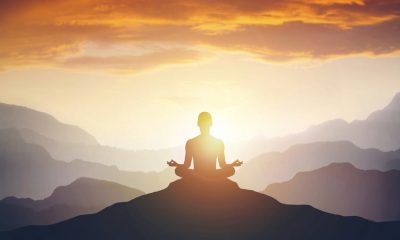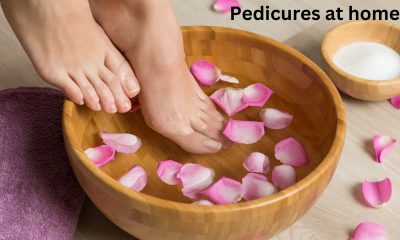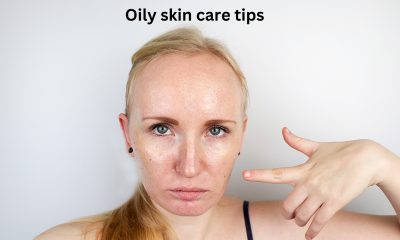Science & Environment
RESONANCE 1.0: Igniting Scientific Curiosity in Joypurhat

Joypurhat Zilla Association of RUET successfully organized “RESONANCE 1.0,” a science Olympiad and quiz competition that greatly impacted both participants and spectators, in collaboration with the Ramdeo Bazla Scientessa Science Club.
On March 23, Ramdeo Bazla Govt. High School in Joypurhat became a center for knowledge and competition. Over 500 students from grades six to ten, hailing from various Upazila, participated with great enthusiasm, contributing to the event’s great success. The event included four distinct competitions, each were made to challenge and develop students’ intellectual skills:
- Science Olympiad, segmented into two categories—one for students in grades 6-8 and another for grades 9-SSC;
- General Quiz Competition, accessible to all students from grades 6 to SSC;
- Human Calculator contest, a rapid-fire mental math challenge where students tackled complex calculations without calculators; and
- Open Quiz Competition, inviting participation from all attendees, creating an atmosphere of wide-ranging intellectual engagement.
The event was graced by the presence of Afroza Aktar Chowdhury, the Honorable Deputy Commissioner of Joypurhat, who was invited as the chief guest. Md. Emdadul Hoque, head teacher of Ramdeo Bazla Govt. High School, was the chair person of the. Other Special guests included the principals of Joypurhat Government Girls’ High School and Joypurhat Sadar Thana High School, along with esteemed educators who motivated the young participants.
In recognition of the students’ exceptional performances, over 70 prizes—including medals, certificates, and books—were distributed by the honourable guests.
Joypurhat Zilla Association of RUET and Ramdeo Bazla Scientessa Science Club were pretty much successful in organizing the event, ensuring a seamless and engaging experience for all the people involved.
The outstanding success of RESONANCE 1.0 was achieved thanks to the relentless dedication of RUET students of Joypurhat from batches 19, 20, 21, 22, and 23 and the School’s Science Club members. Their efforts and commitment transformed this event into an inspiring endeavor.
Motivated by its success, the Deputy Commissioner expressed her strong motivation for similar initiatives in the future. Beyond just a competition, RESONANCE 1.0 targeted to ignite scientific curiosity, highlight the merits of Joypurhat’s students, and provide them with knowledge across various sectors. The enthusiastic response highlighted a significant interest in forming science clubs in all the schools in Joypurhat and making such competitions a recurring event.
With the goal of creating a culture of scientific mindset, RESONANCE 1.0 has established a new benchmark for future educational endeavors in the region.
Science & Environment
Astronauts Refute Claims of Being Stranded in Space

Regardless to what Elon Musk and Donald Trump would have us believe, astronauts Barry “Butch” Wilmore and Sunita Williams were never marooned or abandoned, nor were they ever stuck or stranded in space.
The two NASA astronauts whose 10-day trip to the ISS last summer evolved into a nine-month ordeal were heard by the world on Monday for the first time since they returned to Earth two weeks ago. Additionally, the narrative presented from the White House was much different from their story. Speaking to reporters at a press conference in Houston, just hours after making a joint appearance on Fox News, Wilmore and Williams reiterated that they never felt abandoned or in need of the rescue the president believed was required.
As a political quagmire over their status raged back on the ground, they claimed to have calmly assumed their tasks as members of the space station crew, “planning for one thing, preparing for another,” Wilmore said. The two experienced space travellers seemed somewhat perplexed, if not completely unaware, of the commotion that followed their forced and lengthy stay on the orbiting outpost 250 miles above Earth due to technical issues with their groundbreaking Boeing Starliner spacecraft, which returned without them in September.
Williams and Wilmore provided tactful responses to queries intended to elicit their opinions during the press conference NASA had convened to discuss the science activities the astronauts engaged in while in space. Before returning to a well-crafted explanation of how their training and preparations enabled them to seamlessly transition from the roles of new spacecraft test pilots to routine ISS crew members who splashed down in the Gulf of Mexico on March 18 on a routine crew rotation flight, Wilmore remarked, “The stuck and marooned narrative … yes, we heard about that.” “The plan was completely different from what we had in mind. However, we plan for a variety of scenarios because we are in human spaceflight.
“You never know where it’s going to go,” he added. Earlier in the Fox interview, he refuted Musk’s untrue assertion, heightened by Trump, that the astronauts were “abandoned in space by the Biden administration.” Had they felt marooned, stranded, or stuck? “Any of those adjectives, they’re very broad in their definition,” Wilmore said. “So in certain respects we were stuck, in certain respects maybe we were stranded, but based on how they were couching this, that we were left and forgotten in orbit, we were nowhere near any of that at all. “Stuck? Okay, we didn’t get to come home the way we planned. But in the big scheme of things, we weren’t stuck.
I would like to respond to this other [allegation] by saying, “They failed you.” Who? Who are they? The political football was something Williams was also hesitant to kick. She claimed that when she was in orbit, she only paid attention to the tasks at hand. Perhaps you become somewhat tunnel-visioned. You’re not really aware of what else is happening down there because you’re just doing your job,” she added. I hate to say it, but it’s possible that we revolve around the planet, rather than the other way around. However, I believe that we were simply trying to be a part of the team and were really focused on what we were doing. Naturally, we heard a few things.
Crew 9 commander Nick Hague, who returned to Earth with Williams and Wilmore, supported his crewmate and was the third American astronaut present at the news briefing. “When we’re trying to make operational decisions, the politics kind of don’t make it up there,” he stated. “As the commander, it is my responsibility to ensure the crew’s safety and their safe return.” Musk, the creator of SpaceX, a significant NASA contractor, has persisted in spreading the unsubstantiated claim that Biden held the crew captive in space for political purposes. on the end, they returned to Earth on a SpaceX Dragon capsule.
However, Trump claimed he told Musk to “go get the two brave astronauts,” but it was a spacecraft that had been affixed to the ISS for months. The billionaire and Danish astronaut Andreas Mogensen got into a furious online argument over the accusations, and he later attacked retired astronauts Mark and Scott Kelly—the former senator for Arizona, who is now a Democrat—for criticising him. Williams and Wilmore said they would be pleased to ride on the problematic Starliner again, but its future is uncertain as experts from Boeing and NASA continue to assess the thruster control problems and helium leaks that caused its first crewed trip to terminate prematurely.
As the commander of the Starliner mission, Wilmore acknowledged that there were “some shortcomings in tests, shortcomings in preparation, that we did not foresee” and that he wished he had asked some questions during the flight that he thought may have produced a different result. On Wednesday, the astronauts will testify in person before Boeing executives. He claimed that the entire experience was a learning curve that was common to everyone in “the difficult job we all take part in.” Could you blame someone? I don’t want to blame anyone. I hope no one wants to blame anyone. “Shame, shame, shame” is not what we want to say when we look back. “Let’s make the future even more productive and better,” is what we want to say as we look to the future.
Science & Environment
Indoor Air Pollution: Unseen Threats in Everyday Life

Experimenters at the University of Birmingham used low- cost detectors and innovative ways to compare particulate matter( PM) situations in three homes over a two- week period. Air pollution is increasing day by day nowadays.
They discovered that pollution situations in each house were advanced and further variable than out-of-door situations, inferring that indeed if the out-of-door air quality is good, people may still be exposed to unhealthy situations of airborne adulterants inside their homes. The experimenters set up significant differences in PM situations between the three houses, with one home exceeding the World Health Organisation( WHO) 24- hour PM 2.5 limit on nine days.
This highlights the significance of covering inner air quality at a ménage-specific position.
Published in Scientific Reports, this is the alternate paper published by McCall MacBain Clean Air Fellows studying the philanthropically funded Master’s degree in Air Pollution Management and Control at the University of Birmingham. ” Our study demonstrates the need to cover inner air pollution because people can have unhealthy air at home indeed if out-of-door air is good,” said Catrin Rathbone,co-author and Clean Air Fellow. PM situations differed greatly between places, suggesting that single- position monitoring is inadequate. The platoon points out that the position of the home, ventilation, and residency patterns all had an impact on flyspeck situations, illustrating how complicated inner air quality is.
Owain Rose, a Clean Air Fellow andco-author, said” As further people work from home, it’s critical to comprehend the rudiments that impact inner air quality. Our ways helped to enhance exposure estimates at a reasonable cost by directly modeling inner PM situations. Five rudiments were shown to contribute to PM in inner spaces three were associated with external stimulants, similar as the kitchen articulation of a neighboring eatery, and two were related to internal conditioning, similar as residers’ increased mobility. They discovered that, in discrepancy to lower patches( PM1, PM 2.5), larger patches( PM10) tended to settle more snappily. To more precisely pretend inner PM situations, experimenters employedNon-negative Matrix Factorization( NMF), a potent fashion for revealing latent patterns in data. They were suitable to give a further thorough image of the pollution situations within the houses by using affordable detectors.
-

 Uncategorized5 months ago
Uncategorized5 months agoMindfulness
-

 Health & Lifestyle2 weeks ago
Health & Lifestyle2 weeks agoBangladesh Drops in Happiness Index 2025, Finland Tops Again
-

 Uncategorized7 months ago
Uncategorized7 months ago6 simple methods for doing pedicures at home.
-

 Health & Lifestyle3 weeks ago
Health & Lifestyle3 weeks agoTea After Iftar: Refreshing Tradition or Hidden Risk?
-

 Uncategorized8 months ago
Uncategorized8 months agoHow to be confident presentation in 10 ways
-

 Uncategorized8 months ago
Uncategorized8 months agoHow can you keep your relationship flawless and strong?
-

 Uncategorized8 months ago
Uncategorized8 months agoWhat colours of clothes should I wear according to our skin tone?
-

 Uncategorized8 months ago
Uncategorized8 months ago5 tips for oily skin care



















